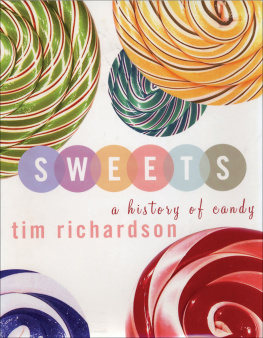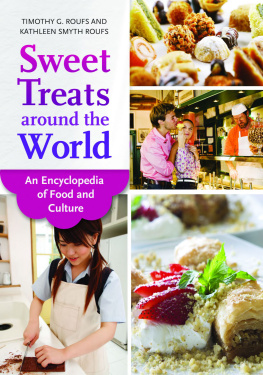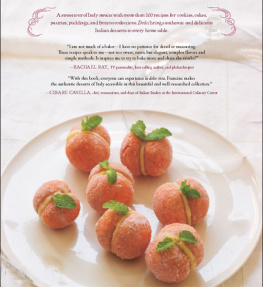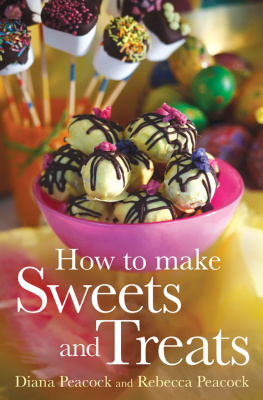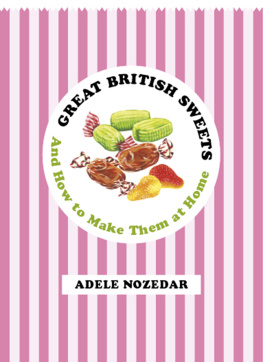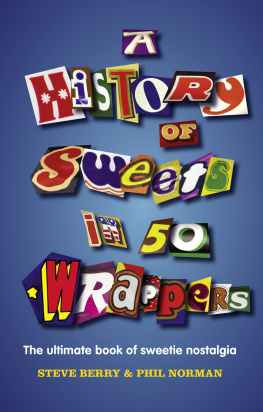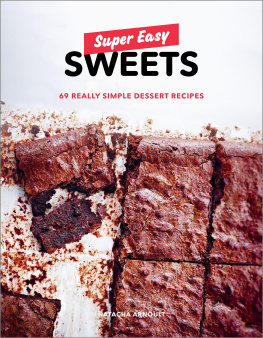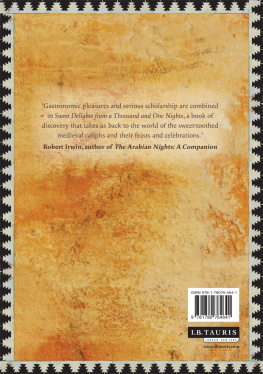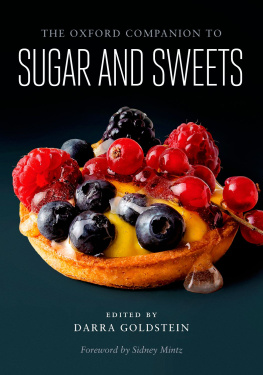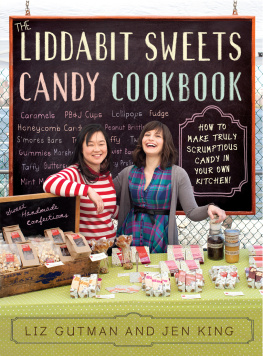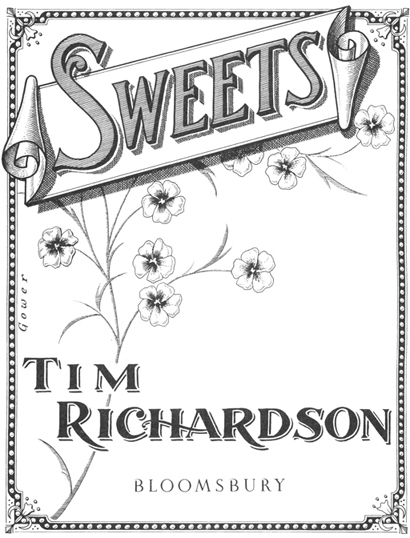
Copyright 2002 by Tim Richardson
Illustrations copyright 2002 by Neil Gower
All rights reserved. No part of this book may be used or reproduced in any manner whatsoever without written permission from the publisher except in the case of brief quotations embodied in critical articles or reviews. For information address Bloomsbury, 175 Fifth Avenue, New York, NY 10010.
Published by Bloomsbury, New York and London
Distributed to the trade by Holtzbrinck Publishers
All papers used by Bloomsbury are natural, recyclable products made from wood grown in sustainable, well-managed forests. The manufacturing processes conform to the environmental regulations of the country of origin.
First U.S. edition published by Bloomsbury in hardcover in 2002
eISBN: 978-1-59691-890-0
This paperback edition published in 2003
1 3 5 7 9 10 8 6 4 2
Typeset by Falcon Oast Graphic Art Ltd.
Printed in the United States of America
by R. R. Donnelley & Sons, Harrisonburg, Virginia
For Claire and for George -
my sweets
Boys and girls are my best customers, sir, and mostly the smallest of them; but then, again, some of them's fifty, aye, turned fifty; Lor' love you. An old fellow, that hasn't a stump of a tooth, why, he'll stop and buy a ha'porth of hard-bake, and he'll say,'I've a deal of the boy left about me still.'
'A sweet-stuff man, formerly a baker', quoted in
London Labour and the London Poor (1851) by Henry Mayhew.
CONTENTS
First I would like to thank my wife Claire for her forbearance in the face of my overwhelming interest in small sugary objects. I apologise to my small son, George, for telling him that my extensive sweets store was 'Daddy's pills', and for allowing him to feed me sweets while still in a state of ignorance about them.
Tif Loehnis of the literary agency Janklow & Nesbit was the person who encouraged me to write the book in the first place, gave me the confidence to put in the preliminary work, and has provided me with support, friendship and wise editorial counselling throughout.
Thank you, Tif. Thanks also to Tif s colleagues in the New York office, Tina Bennett and Dorothy Vincent. Doug Young of Bantam Press had faith in the book and has prevented me from becoming wrecked on the wilder shores of the Isle of Discursiveness. Thanks also to Colin Dickerman and Bloomsbury for their backing as publishers in the USA, and especially for making small chocolate bars in the shape of the book.
Since this is a book without footnotes, I would particularly like to thank all those authors whose excellent work I have used - see the bibliography, but notably Sidney W. Mintz, Martin Levey, Joel Glenn Brenner, Anil Kishore Sinha, Catherine Brown, Laura Mason, Harold McGee, Nicholas Whittaker, J.H. Galloway, Karen Hess, Maguelonne Toussaint-Samat, A.W. Logue, Gilda Cordero-Fernando, Mary Simeti and Alan Davidson. The quotation from Ronald Melville's translation of Lucretius, On the Nature of theUniverse (1997), is reprinted by permission of Oxford University Press. The staff in the Rare Books Reading Room at the incomparable British Library have been professional, helpful, interested and a pleasure to work with.
During my research I benefited from co-operation and help from many people in the confectionery business, and I would like to thank Tony Bilsborough of Cadbury, Wilson Deyermond of Penguin Confectionery, Paul Gandar of the magazine Kennedy'sConfection, Daniel Hencke and Paul Richardson of Haribo, Elizabeth Miisteli at Toblerone, Pamela Whitenack at the Hershey Community Archive, Susan Fussell at the National Confectioners Association (USA) and John Newman of the Biscuit, Cake, Chocolate and Confectionery Alliance (UK).
Many friends provided help and information, and I thank Stefan Stern for reading the sections on business, Noel Kingsbury for bringing back Anil Kishore Sinha's book from India, Gordon Taylor for various press clippings and also information on liquorice, Bronwen Riley for information on Fisherman's Friend, and Stewart Lee for accompanying me to Cadbury World and sustaining me with cups of steaming Bovril. In addition, many friends brought back sweets for me from foreign climes, and I thank Mary Creagh and Adrian Pulham for chocolates from Brazil, Chris and Kazuko Flook for sweets from Japan, Mark Giles for a big bag of sweets from Saudi Arabia, Dorothy Vincent for maple candies from Vermont, Miraphora Mina for Italian violet cachous, Janice Acquah for Ghanaian chocolate, Felicitas Rost for Mozart balls from Germany, Eleanor Church for Mormon chocolate, Catherine Max for more chocolate, and Juliet Summerscale and Daniel Noguez for Uruguayan dulce de leche.
Finally I would like to thank the sweets inventors. Keep it up!
M y grandfather worked for a toffee company. My father was a dentist. So I have always had strong feelings about sweets. But I have never been confused. I like sweets. I like them a lot. And that is why I set about writing this book, the first-ever world history of sweets. I wanted to find out more about my favourite things - and yes, I did want to eat a whole lot of sweets in the process. The world was my gobstopper.
As I delved deeper into the subject, discovering the sweets cultures of other nations and poring over ancient pharmaceutical and cookery manuals, it soon became apparent that a love of sweets has been a part of almost every gastronomic culture. The history of sweets goes back a long, long way, right back to the earliest human civilisations, and (until the late twentieth.century) mankind always associated this love of sweetness with goodness and pleasure. I was embarking on an historical, geographical and gastronomic excursion into an extraordinary world of invention, secrecy, eccentricity, obsession and happiness.
The sweets of a country are, in fact, the one aspect of a cuisine that can almost always be enjoyed and understood by foreigners. I say 'almost'because there will always be exceptions in the world of confectionery - there are millions of sweets out there and (as we will see) some of them are rather strange. But most of them are just really nice, wherever they are from.
Sugary sweetness is often maligned as an unsophisticated, unsubtle, childish taste, but for those of us who are attuned to its nuances and are able to suck or chew or lick without prejudice, the variations of flavour and texture in sweets, and all the gradations of sweetness as it mingles and enhances other flavours, are one of life's great sensual pleasures. This is not to say that we should all aspire to be sweets gourmets. With the sorry exception of fine chocolate, sweets have so far escaped the clutches of connoisseurship; they remain democratic, unpretentious and, for the most part, cheap. After all, it is children who are the best judges of sweets.
No, my approach has been primarily one of description, perhaps enthusiasm on occasion, but there should be no suggestion that my taste is better than anyone else's. With sweets, it all depends on where you grew up and what your favourite sweets were in childhood: sampling hundreds of different sweets from around the world has been a vital part of the research process, but when it finally came to the crunch and I had to decide on my personal top-ten sweets, I found that if I was honest, most of them were the sweets from my home culture that I would have chosen before I embarked on this sweets odyssey.
But what fun it has been finding that out. In the process of writing this book I have been transformed into an international confectionery historian - the world's first. My study is crammed with sweets from all round the world, and as I wrote the book I frequently broke off to sample some rare delight which suddenly took my fancy. The history of sweets is a footnote to a footnote of official world history. Sweets are really not very important amid the drama of wars and empires and social upheaval. But they can improve our everyday lives, providing an innocent moment of pleasure and respite. If you offer someone a sweet, the chances are they will smile. And perhaps that is worth something.
Next page
